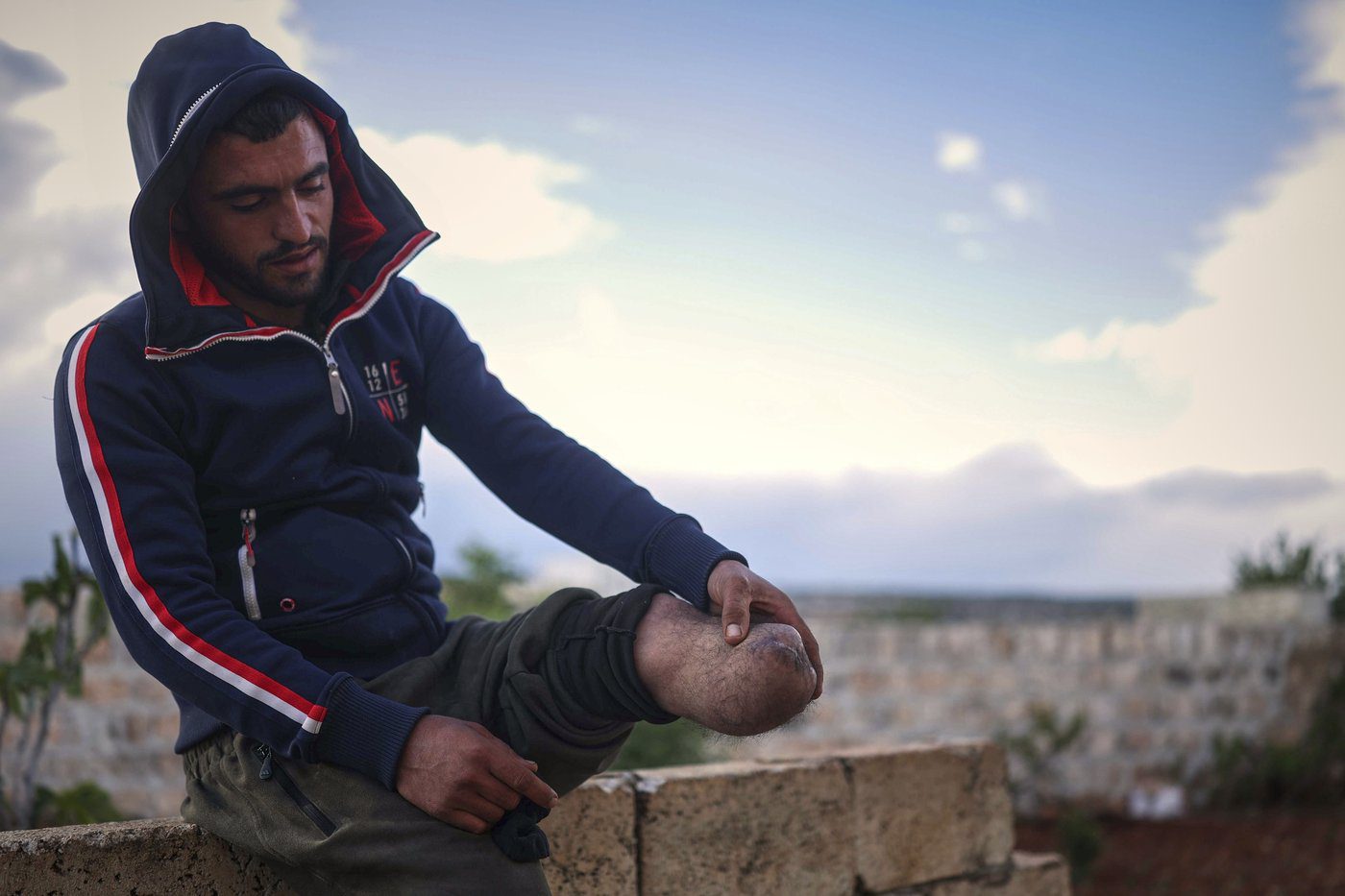OTTAWA — An expert who has disposed of bombs in some of the world’s most dangerous places says European governments pinning their security hopes on landmines are turning to an ineffective tool that will only spread misery and hunger.
“It’s an outdated technology that can quite quickly be rendered useless,” said Gary Toombs, a senior explosive disposal technician with the charity Humanity and Inclusion.
“The use of anti-personnel mines really doesn’t warrant the impact that it will have in the longer term, for the short-term gains that it may have.”
Anti-landmine advocates are urging Canada to step up efforts to convince European countries to remain in the 1997 Ottawa Treaty, which Canada brokered to end the use of anti-personnel landmines around the world.
The treaty led most of the world’s countries to ban the use of these weapons and mobilized funding to clear unexploded landmines from former war zones in places like Vietnam.
This spring, six countries bordering Russia announced plans to leave the Ottawa Treaty. Ukraine, Finland, Poland, Estonia, Latvia and Lithuania have argued that the threat posed by Russia justifies the possible use of landmines to thwart or slow ground incursions.
Toombs disposed of bombs for the British army in the 1990s. He now manages an international team with Humanity and Inclusion that surveys land and clears it of explosives, either by removing the bombs or destroying them on-site.
The job has taken him recently to Ukraine, the Gaza Strip, Syria and Iraq.
In all of these places, he said, landmines failed to stop ground invasions.
“Landmines have been historically used to block or slow an advancing military force, but (their) effectiveness in modern warfare is significantly diminished due to advances in technology,” he said.
Toombs said the war in Ukraine has shown how unmanned drones can circumvent minefields, while ground-based sensors can detect troop movements and show where mines are being placed.
He said these advances have upended a decades-long tactic of deploying “obstacle belts” — like minefields — to corral opposing forces into places where they can be targeted.
In past conflicts, tanks would become trapped in minefields where their wounded crews could be picked off by gunfire. Now, many modern combat vehicles have mine-plows that can clear six-metre-wide lanes to give tanks safe passage, Toombs said.
Ukrainian troops have managed to bypass minefields laid by Russian troops that are also protected by barbed wire and anti-tank obstacles called “dragon’s teeth.”
“I’ve never seen minefields laid in such density as I have in Ukraine,” he said. “These incredibly dense minefields with these obstacles are still being breached.”
Toombs said anti-personnel mines are particularly “insidious” because while they cost about $4 each, removing a single one can cost more than $1,400.
As of July, 444 civilians in Ukraine had been killed and 1,084 had been injured by mines and explosive remnants since February 2022, according to the UN Protection of Civilians in Armed Conflict database.
Toombs’ organization says those numbers likely underestimate the true casualty rate. A fact sheet Humanity and Inclusion published in June said more than one-fourth of Ukraine’s territory is already “littered with landmines and other deadly explosive ordnance,” including cluster munitions.
Landmines can continue maiming and killing civilians decades after the end of a conflict. The Landmine and Cluster Munition Monitor group says 84 per cent of landmine victims in roughly 55 countries in 2023 were civilians, and children and youth are disproportionately vulnerable.
Toombs said these weapons also pollute soil and water sources, rendering large swaths of arable land unusable for decades. He said he fears what this might mean for global food systems.
Ukraine is a major source of wheat for Asia and Africa. In 2022, Turkey helped broker an agreement with Russia to allow grain shipments after disruptions caused by the war put a heavy strain on global food prices.
Toombs said that during his four visits to Ukraine since 2022, he saw farms rendered unusable and towns split in half by landmines.
“Huge amounts of land are no longer able to be accessed safely. Roads and communities are being separated,” he said.
An analysis last fall by the Tony Blair Institute for Global Change, in partnership with Ukraine’s economy ministry, said landmine contamination is costing Ukraine US$11.2 billion annually — about 5.6 per cent of the country’s pre-invasion GDP.
Toombs said he fears the situation is only going to get worse as funding for mine-clearing shrinks and new, cheaper landmines hit the market.
He said that countries exiting the treaty might “start making new types of anti-personnel mines” themselves, adding that the Ottawa Treaty is “one of the most successful treaties” that ever received widespread uptake.
“Anybody that’s thinking of leaving should really think about the long-term impacts, rather than the short-term gains that they think it might deliver,” he said.
Ukraine has signalled it intends to leave the Ottawa Treaty, even though signatories are technically not allowed to exit during an armed conflict. The Ukrainian Embassy in Ottawa said it could not provide comment while its ambassador is in the process of being replaced.
Global Affairs Canada wrote in June that it’s aware of European countries making “difficult and complex decisions” about the treaty. It wrote that defending the Ottawa Treaty is “a core priority for Canada.”
Humanity and Inclusion, previously called Handicap International, is a founding member of the International Campaign to Ban Landmines. Anne Delorme, executive director of Humanity and Inclusion Canada, said the federal government needs to do more to defend the Ottawa Treaty.
“There seems to be a certain acceptance,” she said. “Canada needs to find that same courage that it did when it first led on the Ottawa Treaty.”
Delorme said Canada can acknowledge the threat posed by Russia while advocating against landmines by arguing that unravelling the treaty would make the proliferation of other restricted arms — such as cluster munitions, chemical weapons and atomic bombs — more likely.
She also said it doesn’t make sense for these countries to insist that they will respect international humanitarian law when landmines are “indiscriminate in nature.”
“There is absolutely like no data or research that demonstrates that (landmines) are of any use in Ukraine,” she said.
Delorme noted that Foreign Affairs Minister Anita Anand has listed the “safety of civilians” among her key priorities since taking on the job in May.
She said Canada ought to host the rotating one-year presidency of the treaty when it reaches 30 years in 2027, and convene a summit to rally support for it.
Adam Chapnick, a professor with the Royal Military College, said Canada — as a country with a small population and modest military capacity — relies on international agreements like the Ottawa Treaty.
“The treaty reflected a degree of optimism about the capacity of the world to co-operate in support of reasonable moral intentions,” said Chapnick, who has researched the evolution of Canada’s foreign policy through the decades.
He said that while Canadians can be proud of what the treaty accomplished over 25 years, he’s not sure it will hold for much longer, given how Russia’s invasion has upended the international rules-based order.
“It’s difficult to make the case as strongly today,” he said.
This report by The Canadian Press was first published Aug. 18, 2025.
Dylan Robertson, The Canadian Press





